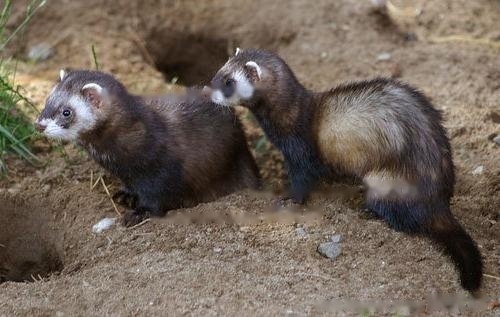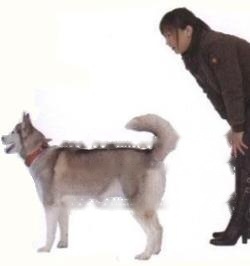Blindfolded ferrets are ferrets, because the range of pets kept by humans is getting wider and wider, and pet ferrets are gradually entering the public's field of vision, because domestic animals Pet ferrets are usually fed as pets, and ferrets used to be wild and difficult to tame, so it is more troublesome to raise. So what are the living habits and breeding methods of pet ferrets?

Blindfolded Mink
Habits
Diet
Ferrets are carnivorous. Their ancestor's original food was a whole live animal, and they usually ate the whole animal, including its meat, guts, bones, skin, feathers, and fur. Ferrets have a short digestive system, so the body metabolizes quickly, so they need constant replenishment of food. It is best to prepare dry meat feed containing high protein nutrition for them.
Behavior
Ferrets are nocturnal animals, sleeping almost in a hammock in a cage during the day, only to get up at night to feed.
Perched
Unlike wild ferrets, ferrets require neither outdoor housing nor running; they are playful pack animals. When they are young, they can be raised in groups in cages, and when they grow up, they can be raised individually or separately from males and females.
Voice
Laughter
Sometimes it makes a cluck or cough sound, This is the sound it makes when playing or exploring a new activity space. When the mink clucks softly and then dances, it sounds like it's laughing, which is its happy expression. Buzzing sounds are sometimes happy, but more excited. Young ferrets often make this sound.
Coquettish
Sometimes there will be a baby-like yah sound, which is a coquettish sound, soft and soft. Soft means it is comfortable.
Scare
Breeding Both male and female ferrets breed seasonally, with sexual activity lasting 5 to 6 months from spring; Mink stimulates ovulation, and its ovarian activity is reflex-dependent, through estrogen stimulation of vulva enlargement and vulvar regression; if female mink does not reproduce, it can remain in estrus for 4 months or more; abnormally prolonged estrus (1.5 ~9 months), in the absence of male ferrets in the laboratory, it can cause fatal aplastic anemia in female ferrets, which is due to high blood sex estrogen, gestation period 41 to 43 days, pseudopregnancy can also be For so many days, two puppies can be obtained in each season, with an average of 8 (2 to 14) cubs. The cubs are born blind or deaf, with no hair all over their bodies. At 3 to 4 weeks old, they have open eyes and hearing, and 2 Milk teeth erupt at ~3 weeks, start eating solids, wean at 6 weeks, and reach adult weight by 4 months. [3] The average life expectancy is 8 years.
If there is a hissing sound, it is usually out of fear or bluffing intimidation.
![[Dog Training 5] The training method of pet dog dining etiquette](/static/img/12192/12192_1.jpg)




